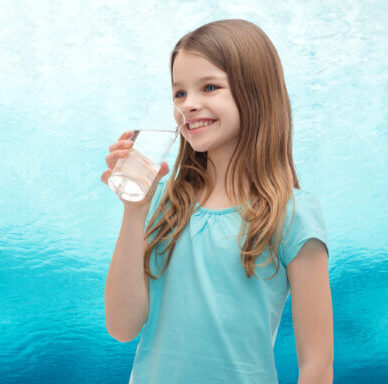With thousands of passengers and crew members confined to a ship in the middle of the ocean, one must wonder how do cruise ships get fresh water to use on a continuing basis? After all, it takes a substantial amount of water to keep everything running properly.
Fresh water is used for drinking, food preparation, swimming, and washing – and that is just for the people on board. In addition, the ship needs fresh water for steam generation, heating and cooling systems, sprinklers, and many other functions. Where do cruise ships get all their fresh water, and where do they keep it? If they recycle it, how do they keep it clean and safe? All reasonable questions to ask.
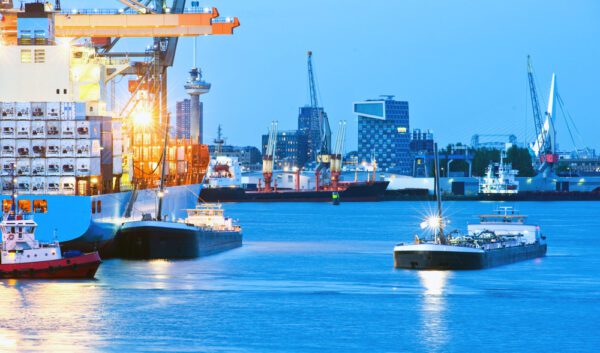
The short answer:
To turn saltwater into fresh water that’s safe to drink, cruise ships use special machines called “reverse osmosis plants” or “flash evaporators.” These machines remove the salt and other impurities from the saltwater, leaving behind only fresh water.
Once the fresh water is made, it’s stored in big tanks on the ship until it’s needed. And when it’s time to use the water, it’s pumped through pipes to different parts of the ship, like the kitchen, bathrooms, and drinking fountains. Although “used” water can be treated and recycled onboard, it is not reused for human consumption.
Keep reading for more detail on how this all works and who makes sure it’s done properly.
How Do Cruise Ships Get Fresh Water: The Big Picture
There are essentially three sources of fresh water for a cruise ship: water from the ocean, water brought from land (a process called bunkering), and collecting condensed water onboard.
Water from the ocean
As we all know, humans can’t drink the saltwater from the ocean. Instead, cruise ships have onboard filtration systems that transform saltwater into fresh drinking water. The filtration systems are desalination plants that remove the salt. Some ships have an additional reverse osmosis water filtration system to purify and mineralize the water further.
“Bunker” the water in
Cruise ships can also bunker fresh water from a terminal or tanker. This means that the ship acquires water from an external source rather than producing it onboard.
Cruise ships – especially river cruise ships – also get locally sourced fresh water from the dockside when they berth. The water provided to cruise ships at a port must come from a reputable source. It undergoes quality testing and purification before it is bunkered. However, the water might undergo further treatment on board
Collecting condensed water
In addition, cruise ships can collect condensed water, which is produced as a byproduct of air conditioning and other cooling systems onboard. This water can be treated and used for various non-drinking purposes such as the laundry room or for cleaning. including drinking, cooking, and cleaning.
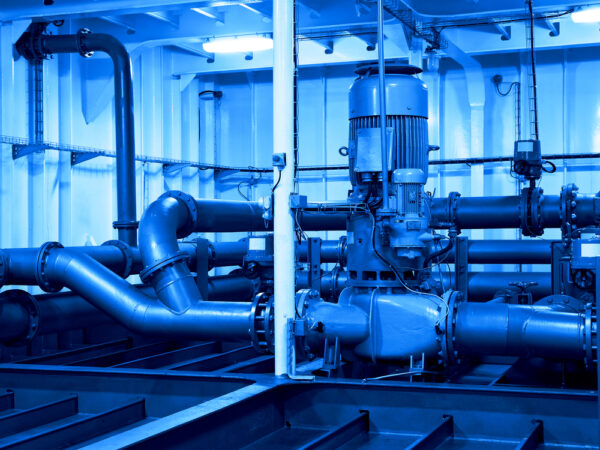
The Different Water Filtration Systems On A Cruise Ship
Since cruise ships need so much water for their passengers and services, they have their own distilling filtration systems onboard, called flash or steam evaporators. The flash evaporator allows the ship to make distilled water when out at sea and reduces the risk of running out of drinking water.
How Flash Evaporators Work On A Cruise Ship
Ship engineers and designers cleverly designed flash evaporators around the engine compartments on ships to increase efficiency. Usually, there are two flash evaporators and engine compartments onboard a vessel, forward and aft. However, many cruise ships employ multi-stage flash evaporator plants to improve the purity of their distilled water.
A single flash operator can produce about 20 – 25 m3/h. Production capacity will depend on the engine load and seawater temperature. The following is a simple explanation of how a two-stage flash evaporator works:
Stage One
- Feedwater (seawater) is pumped through pipes and preheated by High-Temperature (HT) jacket water from the engines.
- The feedwater is heated to temperatures between 158˚F and 176˚F.
- The heated feedwater is fed to the first flash tank and maintained under a vacuum.
- Since the tank is under a vacuum, the hot feedwater immediately begins “flashing off,” turning it to a vapor state.
- The salt and water are separated during the “flashing off” or evaporation process.
- A demister collects the fine water droplets, which are piped through cooler water and condensed.
- The heated seawater is used to cool and condense the vapor, then gets used as feedwater.
Stage Two
- The water that didn’t evaporate during stage one of flash evaporation is called brine. The brine goes to the second stage tank, where the distilling process is repeated.
- The water discharged for consumption must go through a salinometer, which measures salt content.
- If the distillate water has a salinity of more than a predetermined value (usually 10 PPM – parts per million), it is dumped overboard using a three-way valve.
- However, if the salinity is below the set value, the three-way valve returns to production.
Water collected through the process of evaporation and condensation is called distilled water. Some, but not all, ships will treat their water further by adding minerals, flavoring, and chlorine to the distilled water.
Reverse Osmosis Filters On A Cruise Ship
The reverse osmosis filters on a cruise ship are giant versions of the filtration systems people use at home. These filters don’t use heat and are much smaller than flash evaporators. With reverse osmosis, salt water is pushed through microscopic membranes where only clean water can get through.
Salt and other contaminants stay behind on the intake side, while the water that passes through is mineralized. Mineralization and flavoring of filtered water on cruise ships is done according to the specifications of US Public Health Service guidelines. Each reverse osmosis filter produces about 12 – 15 m3/h fresh water, depending on the condition of the filters and seawater quality.
The filters on cruise ships can only be used when out at sea. This is to prevent the filtration systems from becoming blocked by sediment. For instance, flash evaporators should only start operating when the ship is at least 4 nautical miles from the shore, and the ship’s ballast is stable.
Reverse osmosis filters should only be started when the water’s depth is at least 165 ft. This is because the ocean water should be cleaner, and the chances of fouling or damaging the filter membranes should be minimized.
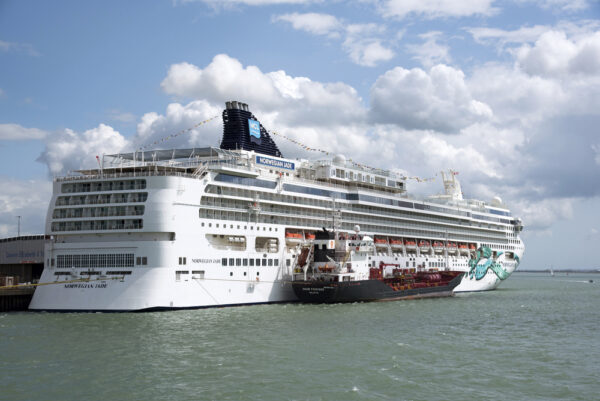
Cruise Ships Also Get Water At The Dockside
Many cruise ships bring potable water onboard when docked at a port terminal. Alternatively, they might get water from a tanker. Bunkering is the process of obtaining fresh water from a terminal or tanker. The bunkered must undergo safety checks to test potability. If the water is not suitable for drinking, they might use it for non-drinking purposes, like engine cooling or laundry.
Alternatively, cruise ships might mix the bunkered water with seawater and filter it using one or both filtration systems. This will increase their drinking water availability for long spells on the water. This said, cruise ships usually bunker potable water once a week or at a turnaround point of a trip (on embarkation days, for instance).
River cruise ships must use bunkered water for drinking as they cannot use river water. River water is often full of sediment and causes more blockages in the filtration system. Hence, river cruise ships will use bunker water and filter it onboard if necessary.
When bunkering potable water from a terminal or tanker, the following US Public Health (USPH) guidelines should be in place:
- The potable water must be quality-checked before supplying the vessel. This is to prevent the new water from contaminating the water onboard.
- The bunkered water should have a declaration of chlorine content and pH level.
- The lines for bunkering potable water should be cleaned and sanitized after every bunker.
- The potable water drinking lines should not be used for any other purpose.
- The bunker’s pipelines and flanges must be covered and protected to prevent contaminants and impurities.
Where Is The Fresh Water Kept On A Cruise Ship?
Fresh water tanks, or bunkers, would sit in pairs along a ship’s hull length. Each couple of tanks would be filled simultaneously to maintain the ship’s ballast and stability.
Do Cruise Ships Recycle Water?
Cruise ships do not reuse wastewater. Instead, the wastewater is separated into two categories: gray water and black water. Examples of gray water include water from sinks, baths, and showers. Black water comes directly from the toilets.
Both undergo treatment that corrects them to the potability standards accepted in some countries. However, the drinking water is not used on the ship; it is expelled from the vessel into ocean waters. The International Maritime Organization and local laws determine the distance from the land for discharging wastewater.
River ships are not allowed to expel their wastewater into the rivers. Instead, they must pay to have it pumped out of their holding tanks.
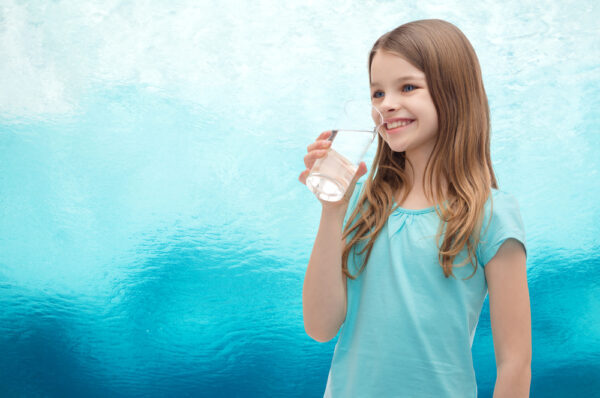
Can I Drink The Tap Water On A Cruise Ship?
The water that runs to cabin and kitchen taps is filtered and safe to drink. This said it might not taste as nice as bottled water. The ship’s authority should warn you if drinking water is unsafe. (And you do have the option to bring on some bottled water of your own.)
All potable water on a cruise ship is frequently treated, filtered, and tested as it has to meet the standards set by the World Health Organization and USPH. As a result, many smaller cruise ships and river cruise ships employ extra filtration systems in their galley.
Is The Ice On Cruise Ships Safe To Consume?
Just as the tap water on a cruise ship is safe to drink, so is melted ice in your drink. The ice onboard a cruise is carefully monitored – in terms of handling and storage. Ice dispensers and bins are regularly cleaned and sanitized.
Closing Thoughts
Cruise ships have a complex system in place to ensure the availability of a constant supply of fresh water that is safe for human consumption. The ships have equipment that transforms saltwater into fresh water, which is then stored in large tanks on the ship. While used water can be treated and recycled, it is not reused for human consumption. The safety and cleanliness of the water is closely monitored by trained professionals to ensure the health and well-being of everyone on board. So, the next time you’re on a cruise, have no worries about drinking up.

